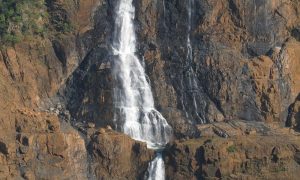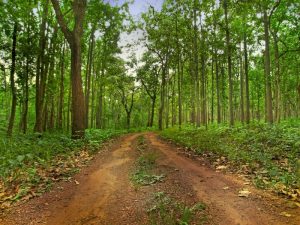Simlipal National Park is a tiger reserve is located in the Mayurbhanj district of Odisha which covers an area of 2,750 km2. Simlipal National Park is a part of the Mayurbhanj Elephant Reserve, which includes three protected areas Simlipal Tiger Reserve, Hadgarh Wildlife Sanctuary, and Kuldiha Wildlife Sanctuary.
Simlipal National Park derives its name from the abundance of red silk cotton trees growing in the area. The park is home to the Bengal tiger, Asian elephant, gaur, and chausingha. Since 2009, it is a protected area and is a part of the UNESCO World Network of Biosphere Reserves.
List Of National Parks In India 2022 Complete State Wise
Simlipal National Park History Location

Simlipal Tiger Reserve covers an area of 2,750 km2, out of which 1,194.75 km2 forms the core area. It has the peaks of Khairiburu at 1,178 m and Meghasani at 1,158 m. The main waterfalls are the Barehipani Falls at a height of 217 m and the Joranda Falls at 181 m.
Buy Prime Test Series for all Banking, SSC, Insurance & other exams
Simlipal National Park History

The Simlipal elephant reserve mainly originated as a hunting ground for royals. It was formally designated a tiger reserve in 1956 and under Project Tiger in May 1973. In 1979 “Mugger Crocodile Scheme” was started at Ramatirtha, Jashipur.
The Government of Odisha declared Simlipal a wildlife sanctuary in 1979. Later in 1980, the state government proposed 303 square kilometers of the sanctuary as a national park. In 1986, the area of the national park was increased to 845.70 square kilometers. The Government of India declared Simlipal as a biosphere reserve in 1994.
UNESCO added Simlipal national park to the list of Biosphere Reserves in May 2009. 10,000 people are living in 61 villages in the forest which is why the Simlipal is yet to be declared a full-fledged park, despite its having the status of one of the 18 biospheres of India.
Simlipal National Park Geography

The Simlipal tiger reserve is in the Mayurbhanj district in Odisha. Simlipal Elephant Reserve is an ecosystem complete with forest vegetation mainly Sal trees, fauna, and the Ho or Santhal tribal settlements. The high hills are surrounded by Meghasani/Tunkiburu, which is the highest peak in the park. At an altitude of 1,165 meters followed by Khairiburu at above 1,000 meters elevation.
12 rivers cut across the plain area of Simlipal National Park. The prominent rivers include Budhabalanga, Palpala Bhandan, Kharkai River, and Deo. The forest also counts two prominent waterfalls Joranda/Jorodah at 181 meters and Barheipani/Barhai at 217 meters.
Simlipal National Park Climate
The climate of Simlipal National Park is moderate. In summer there is a hot temperature of around 40 °C whereas the winter months can be as low as 14 °C. The rainfall ranges from moderate to heavy.
Simlipal comes under a high cerebral malaria-prone zone. In cerebral malaria, the sequestrated red blood cells can breach the blood-brain barrier possibly leading to coma. Cerebral malaria, if not detected, causes death. Initial symptoms of cerebral malaria are often mistaken as those of acute jaundice. There have been many recorded cases of death due to cerebral malaria after visits to Simlipal.
In 2021, large fires broke out in the Simlipal Tiger Reserve and continued to burn for over two weeks before they were brought under control. The 2021 Simlipal forest fires resulted in widespread environmental damage and caused an exodus of fauna from the park into nearby human habitations.




 World Basketball Day 2025 Celebrates Bas...
World Basketball Day 2025 Celebrates Bas...
 UN Celebrates Second World Meditation Da...
UN Celebrates Second World Meditation Da...
 Winter Solstice 2025 Observed on Sunday,...
Winter Solstice 2025 Observed on Sunday,...







